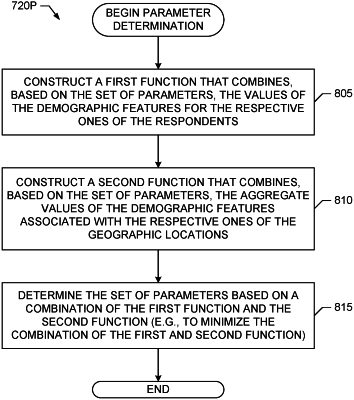| CPC H04N 21/25841 (2013.01) [H04N 21/25883 (2013.01); H04N 21/2668 (2013.01); H04N 21/44222 (2013.01); H04N 21/252 (2013.01)] | 20 Claims |

|
1. An apparatus comprising:
memory; and
at least one processor to execute computer readable instructions to at least:
associate demographic features of monitored panelists of known geographic locations as demographic features of respondents in geographic locations that are a subset of the known geographic locations;
construct a model that is to return a plurality of probabilities that respective ones of the respondents are associated with respective ones of the geographic locations, the model based on parameters representative of aggregate values of demographic features for the geographic locations;
determine values of the parameters based on a combination of a first function and a second function, wherein the first function to combine the parameters with values of the demographic features for the respective ones of the respondents, wherein the second function to combine, the parameters with the aggregate values of the demographic features associated with the respective ones of the geographic locations; and
determine, based on the model, the plurality of probabilities that respective ones of the respondents are associated with respective ones of the geographic locations.
|